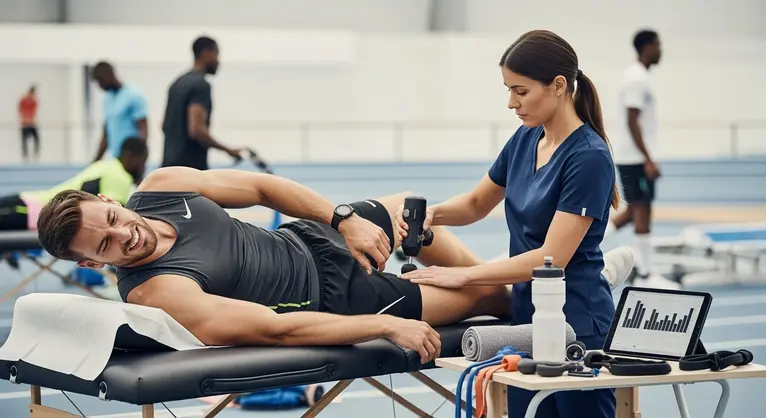From weekend warriors to seasoned pros, injuries are a reality for everyone living an active lifestyle. A single misstep can sideline your goals, but knowledge and proactive steps can make all the difference. Today, let’s break down how sports governing bodies help keep you in the game—and how you can apply their world-class strategies to your own training and recovery.
How Sports Governing Bodies Shape Safety
Ever wonder why sports today are safer than ever? Organizations like the NCAA, USA Football, and international federations are leading the charge:
- Establishing Safety Policies: From mandatory concussion protocols to requiring Automated External Defibrillators (AEDs) at every venue, governing bodies set the gold standard for athlete safety.
- Educational Initiatives: Programs like USA Football’s “Heads Up Football” teach coaches, parents, and young athletes correct techniques—significantly reducing injuries.
- Facility & Equipment Checks: Regular audits keep playing surfaces clear of hazards. Safe, properly-fitted gear is a must from youth leagues to the big leagues.
Real-Life Example: After adopting heat acclimatization guidelines, states like Georgia saw a dramatic drop in heat-related football deaths.
Effective Strategies for Preventing Common Injuries
Injury prevention isn’t just elite athlete territory—it starts with habits you build every day. Here are the most common sports injuries and how to steer clear:
- Concussions & Head Injuries: Practice proper technique; always wear protective gear. Speak up if you feel dazed or “off.”
- Sprains & Strains: Warm up thoroughly, stretch regularly, and ease into new activities or intensities.
- Overuse Injuries (e.g., tendonitis, stress fractures): Mix up your workouts. Listen to your body—soreness is OK, persistent pain isn’t.
- Heat-Related Illness: Hydrate, take breaks, and respect extreme weather. Know the early signs: dizziness, nausea, heavy sweating.
- Sudden Cardiac Events: Get screened before starting a new sport, especially if you have a family heart history.
Prevention Playbook
- Learn and practice safe techniques for your sport.
- Use high-quality, well-maintained equipment.
- Follow structured programs like Heads Up Football or USOPC guidelines.
- Communicate with coaches and teammates about how you feel—early intervention matters!
Recovery 101 – Returning to Strength
What happens after an injury matters just as much as how you prevent one. Here’s how the pros recover—and how you can, too.
Step-By-Step Recovery Principles
- Rest & Diagnose: Listen to your body. Get a professional evaluation if pain lingers.
- Rehabilitation: Follow a structured plan—physical therapy, mobility work, and gradual reintroduction to activity.
- Gradual Return-to-Play: Don’t rush! Use guidelines from governing bodies to know when you’re truly ready.
Nutrition & Recovery Tools
- Eat For Healing: Include lean protein, leafy greens, and berries to repair tissue and reduce inflammation. For additional insight into nutrients that support recovery, check out our post on vitamin C immunity athletes.
- Smart Tools: Use compression sleeves, cold packs, and massage as recommended—not just for pros, these speed up recovery at home.
- Stay Accountable: Track your rehab just like your workouts; celebrate small wins.
Motivation & the Mental Game
Injury can feel isolating, but mental recovery is key. Governing bodies now mandate access to sports psychologists for a reason—your mindset shapes your comeback.
- Set small, achievable goals.
- Stay connected with your team or fitness community.
- Celebrate being proactive—every stretch or rehab session is progress.
Practical Tips—What You Can Do Now
No matter your level or role, these actions keep you ahead of the injury curve:
- Athletes: Prioritize warm-ups and hydration daily. Report injuries early, not when “it gets worse.”
- Coaches & Parents: Model safe behaviors, encourage honest conversations, and stay updated on the latest safety standards.
- Everyone: Know when to seek expert help—don’t play guessing games with pain or persistent symptoms.
Resources
- Visit national sport body websites for up-to-date safety checklists.
- Use government or club emergency action plans as templates for your own.
Conclusion: Stay Proactive, Stay Powerful
Your fitness journey deserves the same care and dedication as the pros. Sports governing bodies pave the way, but the next move is yours. Prioritize prevention, approach recovery smartly, and use every resource at your disposal. By building these habits, you’ll recover stronger, stay motivated, and champion lifelong health—on and off the field.
Ready to take the next step? Share your favorite safety tip, or tag Gympulse Club in your recovery wins—we’re cheering for you every step of the way!

